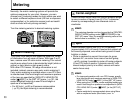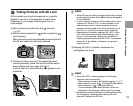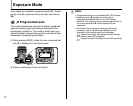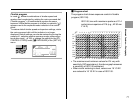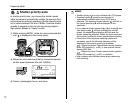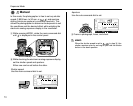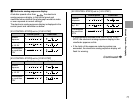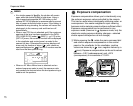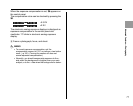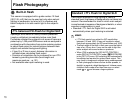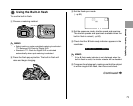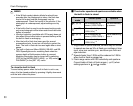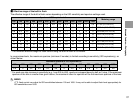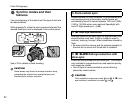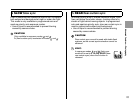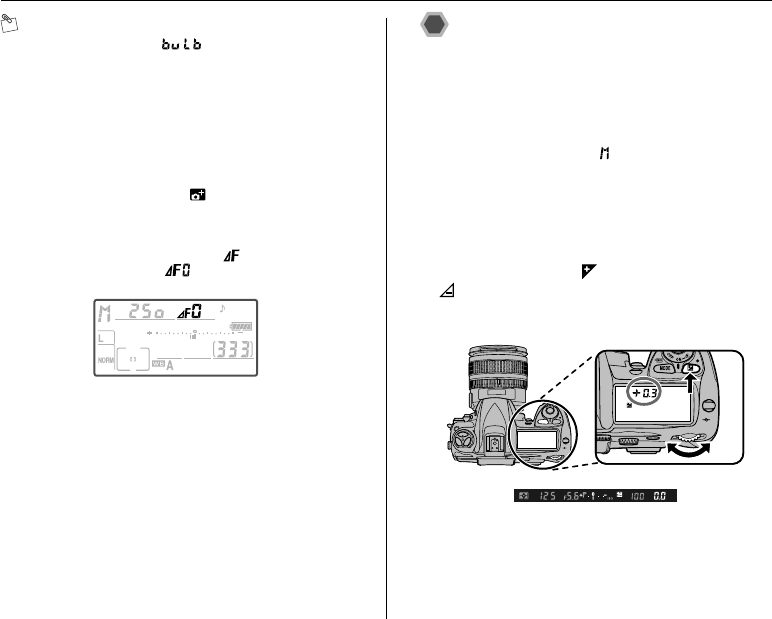
76
Exposure Mode
MEMO
• At a shutter speed of , the shutter will remain
open while the shutter button is held down. Using a
fully-charged rechargeable NP-150 battery or the
optional AC135VN adapter is recommended to prevent
loss of power while the shutter is open. If the battery is
exhausted during shooting, the camera will record the
photograph to the memory card and then turn off
automatically.
• When a non-CPU lens is attached and if the maximum
aperture of the lens has been specified in the [NON-
CPU LENS DATA] under [ MISC.] (➝p.121) in the
[SET UP] menu, the current f/-number will be displayed
in the viewfinder and control panel, rounded to the
nearest full stop. Otherwise the aperture displays will
show only the number of stops ( , with maximum
aperture displayed as ) and the f/-number must be
read from the lens aperture ring.
• When an AF Micro Nikkor lens is attached and an
external exposure meter is used, the exposure ratio
only needs to be factored when the lens aperture ring is
used to set the aperture.
Exposure compensation
Exposure compensation allows you to intentionally vary
the optimum exposure value controlled by the camera.
This can be useful when intentionally achieving under- or
overexposure. Use center-weighted or spot metering
because matrix metering cannot achieve sufficient effect.
Exposure compensation can be performed in any
exposure mode (However in exposure mode, only the
electronic analog exposure display changes—selected
shutter speed and aperture do not change).
AWhile pressing the D, rotate the main-command dial
and confirm exposure compensation in the control
panel or the viewfinder (in the viewfinder, positive
values are shown by a icon, negative values by a
icon). Exposure compensation can be set to values
between –5 EV (underexposure) and +5 EV
(overexposure) in increments of 1/3 EV.



